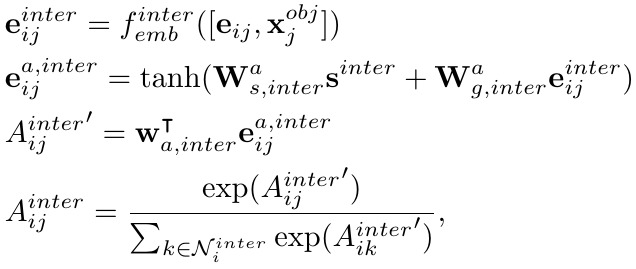Keyword [LGRAN]
Wang P, Wu Q, Cao J, et al. Neighbourhood watch: Referring expression comprehension via language-guided graph attention networks[C]//Proceedings of the IEEE Conference on Computer Vision and Pattern Recognition. 2019: 1960-1968.
1. Overview
1.1. Motivation
- Mattnet. language and region features are learned or designed independently without being informed by each other.
In this paper, it proposes Language-guided Graph Attention Network (LGRAN)
1) Language Self-attention Module
2) Language-guided Graph Attention (node attention & edge attention)
Make referring expression decision both visualisable and explainable.
- directed graph
- node. object set of proposals or GTs
- edge
- intra-class edge. spatial relationship
- inter-class edge. spatial relationship + other objects’ visual feature

1.2. Dataset
- RefCOCO
- RefCOCO+
- RefCOCOg
2. LGRAN

2.1. Problem
1) Given an image $I$, localise the object $o’$ referred to by r from the object set $O={o_i}, i=1,…,N$ of $I$.
2) $O$ is given as GT or obtained by an proposal generation method.
2.2. Language Self-Attention Module




Output
1) $s_{sub}$, $w_{sub}$
2) $s_{intra}$, $w_{intra}$
3) $s_{inter}$, $w_{inter}$
2.3. Language-guided Graph Attention Module
2.3.1. Graph Construction
1) Node set. $V={v_i}, i=1,…,N$
2) Edge set. $E^{intra}$, $E^{inter}$
3) intra-class edge set. top $k$ objs based on distance.
4) inter-class edge set. top $k$ other objs based on distance.
5) $k=5$
6) Node $v_i$. img feature $v_i$ (512) + $l_i$ (5)


7) $e_{ij}$

8) $x_c$. centre coordinate
2.3.2. Language-guided Graph attention

the Node Attention

the Intra-class Edge Attention

the Inter-class Edge Attention

2.3.3 The Attended Graph Representation



2.3.4 Matching Module

CrossEntropy
3. Experiments
- IOU > 0.5. prediction is true
